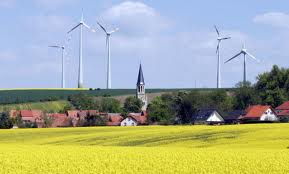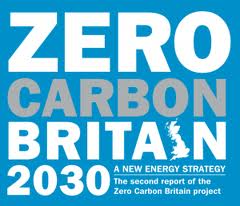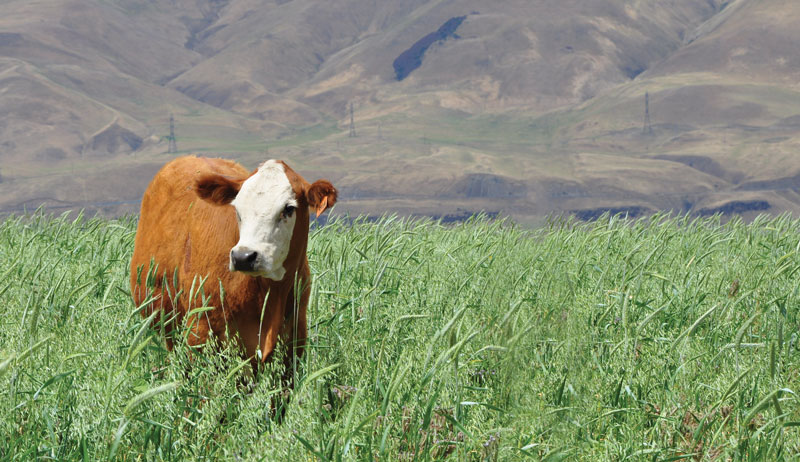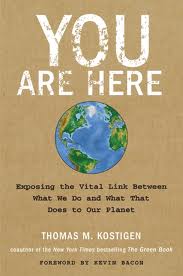Why do we need it?
The link between climate change and greenhouse gas emissions is well accepted and there is a world-wide impetus to reduce these emissions to reduce future global warming.
The Australian government has set a target of reducing greenhouse gas emissions by 5% by 2020 from 1990 levels. Australia has the highest per capita carbon footprint in the world, largely due to its reliance on coal-fired electricity stations, which are responsible for 40% of the country’s emissions. Australia is also being left behind in the global switch to renewable energy and carbon neutral practices.
What is the proposed carbon tax scheme?
- 500 of Australia’s most polluting companies pay a carbon tax of $23 per tonne of carbon dioxide produced, increasing at 2.5% above inflation from July 1st 2012.
- These companies increase the cost of their products to compensate for the increased tax.
- $15 billion of the carbon tax revenue over 3 years is returned to low and middle income earners (under 80K p.a.income), mostly through changes in tax thresholds and pensions.
- Fuel is not subject to carbon tax for 2 years.
- $9 billion of the 3-year revenue is used to compensate and support jobs in the affected industries.
- $14 billion of the carbon tax revenue to be invested in clean energy sources.
The carbon tax scheme will transition to a market-based Emissions Trading Scheme in 2015.
How will it reduce greenhouse gas emissions?
 Firstly, it encourages investment in clean energy sources as these become cheaper relative to sources that are taxed. It also encourages the major polluters to clean up their act, reduce their carbon tax liability and hence reduce their prices compared to their competitors. The compensation paid to the polluters gradually decreases, giving further incentive to move to clean energy.
Firstly, it encourages investment in clean energy sources as these become cheaper relative to sources that are taxed. It also encourages the major polluters to clean up their act, reduce their carbon tax liability and hence reduce their prices compared to their competitors. The compensation paid to the polluters gradually decreases, giving further incentive to move to clean energy.
$14 billion of the carbon tax revenue is to be used directly to encourage clean energy initiatives. This includes $1 billion to improve energy efficiency, $10 billion towards clean energy technology and $3 billion towards renewable energy. A $10 billion finance fund is also earmarked to provide loans for renewable energy. The government has set a target of 20% of power from renewable energy by 2020.
As prices of polluting products such as electricity and gas rise, consumers are expected to reduce their consumption of these polluting products through lifestyle changes. As renewable energy sources become more widely available and relatively inexpensive, consumer demand for these products will also increase. The government also plans to close the most polluting coal-powered electricity plants and replace them with cleaner gas.
It is estimated that 159 million tonnes of carbon pollution will be removed by these measures. Australia’s total emissions for 2010 were 577 million tonnes, giving an expected result of 418 million tonnes in 2020. Their original commitment of a reduction of 5% from the 1990 level of 457 million tonnes gives a target of 434, so they have managed to exceed their rather unambituous promise.
What’s in it for you?
The government estimates that 4 million households will be better off, 6 million no worse and 8 million will be partially compensated for price rises. The average household will pay an extra of $9.90 per week but benefits are set at an average of $10.10.
The tax-free threshold rises from $6,000 to $18,000 per year giving an extra $300 in the pocket, pension payments increase by $338 for single pensioners and $510 for couples, benefits for Family Tax, Income Support and Single Parents are all increased.
Fuel will be exempt from the carbon tax for 2 years, but will then kick in for heavy vehicle diesel and big businesses.
What are the pros?
 A carbon tax scheme is relatively simple to administer compared to an emissions trading scheme, as favoured in the EU and New Zealand, amongst others. This also means that it is less susceptible to creative trading practices that do not produce real reductions in emissions.
A carbon tax scheme is relatively simple to administer compared to an emissions trading scheme, as favoured in the EU and New Zealand, amongst others. This also means that it is less susceptible to creative trading practices that do not produce real reductions in emissions.
It provides a strong and permanent incentive to reduce emissions. The price rises in consumer goods will target those who consume the most, generally being the wealthier households. Tax benefits reduce the impact on lower income households, but there is no direct link to spending on carbon-taxed products.
Reducing greenhouse gas emissions leads to cleaner air and a consequent drop in illnesses related to air quality such as bronchitis, asthma, cardiac and respiratory conditions. Research has shown that a 30% drop in emissions in the EU would lead to health savings of 30 billion euros compared to implementation costs of 46 billion euros.
What are the cons?
If too much of the carbon tax is returned to the polluting industries, there will be a greatly decreased incentive for real change to occur. If the carbon tax is too high, it may encourage industries to relocate abroad to countries that have no pollution costs.
Rebates to consumers must be a completely neutral benefit that does not reward people for spending more on carbon-taxed products. Any increase in taxes is seen as a negative by many of the general public and the government may not be able to get the backing from the public that it desperately needs.
Agriculture is not included in the carbon tax even though livestock farming is responsible for at least 20% of global greenhouse gas emissions.
Does it work in practice?
In 1999, Germany implemented their Ecological Tax Reform, which increased the prices of fuel and energy. They then used 90% of this tax revenue to offset public pension costs, reducing non-wage labour costs with the aim of stimulating employment.
By 2003, carbon dioxide emissions had been cut by 20 million tonnes yearly with a projection of 24 million tonnes annually. Employment rose by 250,000 jobs by 2003, partly through the lowering of employer pension costs and partly through increased employment in the renewable energy sector.
Around 80% of the population agreed that the ecological tax had been a motivating factor in reducing their personal energy consumption. This was achieved through simple measures such as turning off lights and appliances when not in use, lowering heat settings, investing in insulation, using public transport and changing driving habits.
Finally, the development and marketing of energy efficient and environmentally friendly products, services and technologies benefited from the increased demand in these areas.
Reducing your carbon footprint
Don’t forget that 25% of your carbon footprint is produced by the food you eat. Find out how to make better food choices that help reduce your carbon footprint at Food’s Carbon Footprint.
Check out Zero Carbon Britain which offers a vision of how it is possible to reduce emissions to zero.
And read The World After Climate Change for the impact that climate change is likely to have on our planet.
Comments Please!
Let me know what you think. Do you believe in a price on pollution? Are you prepared to make lifestyle changes to help reduce global warming?








Hello, Apparently, Australians, per capita, are one of the world’s biggest contributors to greenhouse gasses.
Sadly, both of the major parties here, like elsewhere, especially America, accept donations from the companies who directly, or indirectly, benefit from government legislation.
Until donations to political parties by big business, or any company with a vested interest in keeping the status quo as it currently is, then reducing greenhouse gas emissions, will continue to increase.
God help my grandchildren if this is the case.
Comments from previous version of Green Eatz
Eli Court, Energy Policy Advocate, 04/24/2011 17:05
Hi there Jane
Great article, well done. My organisation, the Moreland Energy Foundation, has also prepared some simple, easy-to-understand summaries of the carbon price, that your readers might like to read too.
They are:
– Our 30 second rundown of carbon pricing here (https://www.mefl.com.au/blog/item/642-confused-about-carbon-pricing.html)
– Answers to common carbon pricing questions here (https://www.mefl.com.au/blog/item/700-carbon-price-questions-answered.html)
Cheers!
Eli
Blair Palese 04/27/2011 01:24
Hey Jane – this is excellent and indeed something the Government seems incapable of doing in a way the public can understand. Hats off to you! I’ve been tweeting it and will list it as a resource on the 350.org Australia Facebook site now. Many thanks for making the effort!
Shelley 04/27/2011 21:12
Excellent simple article – I am forwarding the link to all my confused friends.
I can not believe anyone could think we should not pay for our destructive practices!
We are a family of 5 and have not owned a car in 5 years. Getting around on bikes is fun, easy + good for us all.
I’d be interested in Mals tip for reducing consumption in the house?
I am just getting in to the habit of turning everything off at the wall…
Catterick 07/10/2011 22:13
The fact that atmospheric carbon dioxide is at the very low end of its range geologically, and has been at a concentration of many thousand parts per million for millions of years at a time in the past [compared with today’s less than 400 ppm], without ever causing runaway global warming, falsifies the CO2/global warming catastrophe hypothesis being put forth by James Hansen, Gavin Schmidt, the UN and many others.
Whenever I hear anyone in the government, including NASA, GISS, etc., scaremongering about CO2, I can almost feel their hands digging around in my pockets for more loot.
Because that’s what it’s all about, folks: your hard-earned money, and how these scam artists can get at it.
Jane of Green Eatz 07/10/2011 22:41
Hi Catterick
‘Although the scientific process is always open to new ideas and results, the fundamental causes and consequences of climate change have been established by many years of scientific research, are supported by many different lines of evidence, and have stood firm in the face of careful examination, repeated testing, and the rigorous evaluation of alternative theories and explanation.’ National Academy of Sciences, USA
And these so-called ‘scam artists’ are not after your money. All of the Australian carbon tax is returned to the people through tax breaks, support of affected industries and investment in renewable energy. And many people will be better off!
Michael 06/30/2012 14:34
How do you measure pollution by tonne when it is weightless ?
Isn’t carbon naturally produced, not man made ?
We are basing all this pricing / taxes on infomation that is quite young, the earth has always warmed & cooled for thousands of years. Who really is getting conned here ?
Jane Richards 07/05/2012 10:12
Emissions are measured in tonnes of Carbon Dioxide, as a gas this weight takes up 550 metres cubed, about the size of a small house. Within that amount of gas there are around five 50 kilo bags of carbon.
Carbon dioxide emissions are both natural and man-made, but the increase in man-made emissions over the last 100 years has never occured before in history. Read my blog on past global warming scenarios that show the likely impact of increased emissions in the future.
Richard Olsen 10/10/2012 19:11
Do I believe in a price on carbon, well yes. But the carbon tax has big problems, the biggest is that it is a wholesale tax. You might say, big deal but this is a real problem. So let’s take electricity. For the average Jo this makes little if any difference because of the way the system works, regardless of how much electricity you use at any time during the day the tax percentage is exactly the same. But if you are reliant on off-peak electricity, say you are a baker, suddenly you are in big trouble because the tax % increases dramatically. The reason being that the carbon tax is added to the cost of a Mwh of electricity. The govts answer to this problem is that at tax time you will get some of your money back, but it is surviving till then and that is the problem. How do you cure this, beats me!
Jane Richards 10/13/2012 08:57
Hi Richard, the main aim of the carbon tax is to encourage everyone to reduce their carbon footprint by reducing their reliance on fossil fuels. So perhaps you could look at this as an opportunity to green your business, improve efficiency and increase your profits too! What about an energy audit to identify where you could make savings? Or changing your energy supplier to a green power company? Or even producing your own energy with solar power? And there are lots of small things you could do right now to reduce your electricity usage…unplugging appliances when not in use (saves 10%), switching to energy efficient light bulbs, adjusting your thermostat, baking in the most efficient manner etc. You could become the greenest baker in town! A great marketing opportunity to boot Good luck, Jane